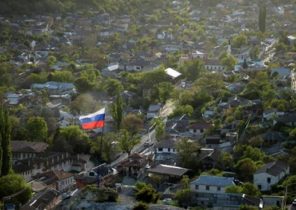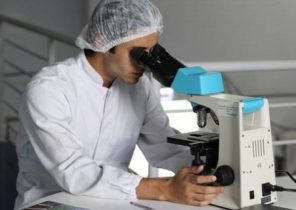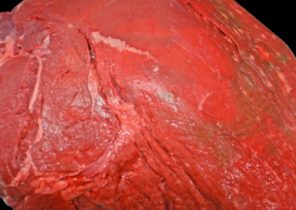A new study finds the ancient connection between native Americans and their ancestors in East Asia. A few thousand kilometers from land that once linked Eurasia and America, was discovered a tooth, which is 14 thousand years ago belonged to a close relative of today’s native Americans.
“It’s just great,” says Jennifer raff (Jennifer Raff), a geneticist from the University of Kansas in the city of Lawrence, studying the process of colonization of the Americas. According to her, the data suggests that the Siberian ancestors of the indigenous inhabitants of North America was inhabited by much larger areas and were more mobile than was assumed. Perhaps the data obtained indirectly confirm the hypothesis that the ancestors of native Americans were separated from their Asian ancestors, when they were in the territory of Beringia, a kind of land bridge that linked Siberia with Alaska.
About 20 thousand years ago people began to move the Eastern edge of Siberia and to penetrate Beringia. However, for a long time it was not possible to establish where they lived in Siberia, and in which areas moved.
A new study provides the earliest evidence of close genetic relatives of native Americans who lived on the territory of Eurasia. According to archeogenetics (archaeogeneticist) Johannes Krause (Johannes Krause), Director of the Institute of history of man, max Planck, who led the group of experts, the places where they found these artifacts, which are much farther from Beringia, than expected based on previously available information. In the 1970-ies Russian archaeologists conducted excavations on the territory of Russia, near the village of Ust-Kyakhta, sandwiched between the southern shore of lake Baikal and the border with Mongolia. They found thousands of stone and bone tools, pottery and bones of deer and fish — plus a fragment of human tooth.
The tooth for decades was in the drawer among other objects in the collection as long as Svetlana Schneider (Svetlana Shnaider) of the Russian Academy of Sciences did not pay attention to it expert on ancient DNA at the Institute of history of the person max Planck. “Initially I was skeptical” regarding the fact that there could still be traces of DNA, says Krause.
However, the Siberian cold and dry environment contributed to the preservation of DNA, and the team from Germany managed to sequence the genome on the basis of the tooth pulp. By results of the conducted radiocarbon Dating of charcoal and bones found with this tooth, they were able to establish that his age is about 14 thousand years. The obtained genome suggests that this tooth belonging to a man with the same mix of ancestors from East Asia and Eurasia as the current native Americans. This man appeared as a result of the oldest close relative of the native Americans beyond the Americas. This is what the members of this group later in the journal “Cell” (Cell).
This man lived 4,500 kilometers from Beringia and about 3200 miles from women from the North-Eastern part of Siberia, where two-thirds of the genome were shared with modern native Americans. According to Krause, this suggests that the source population from which came the native Americans, was in the extensive regions in the North-East of Eurasia.
According to raff, this spectacular habitat in turn suggests that members of this group who were the direct ancestors of native Americans became isolated in genetic terms, while in Beringia, but not in Siberia, where they drifted for thousands of years. Today, the people living near lake Baikal have almost no common genetic traits with more ancient population, and this suggests that their place about 10 thousand years ago were occupied by migrants — mostly from North-East Asia.
People who lived near lake Baikal, for thousands of years continued to move around and interact with other groups, as evidenced by other findings, which was mentioned in the study. Two of the buried approximately 4200 years ago next to each other remains found DNA traces causing an epidemic of the bacterium Yersinia pestis (Yersinia pestis), which were primarily found in the Western regions in people who had genetic links with the Eurasian steppe.
“These bacteria come all the way from the Baltic to Baikal for about 100 years, and it is somewhat surprising, says Krause. Today we see how the coronavirus was spreading everywhere in three months, but the Bronze age was not so globalized world.”
This combination of ancient human and pathogenic DNA provides a rare opportunity to look at the place, which is critical for understanding the origin of the genetics of native Americans, as well as residents of Asia and Europe, said Murjani Priya (Priya Moorjani), a geneticist from the University of California at Berkeley. “Every specimen discovered so far from our places, helps to deepen our understanding of history and human evolution,” she adds.







